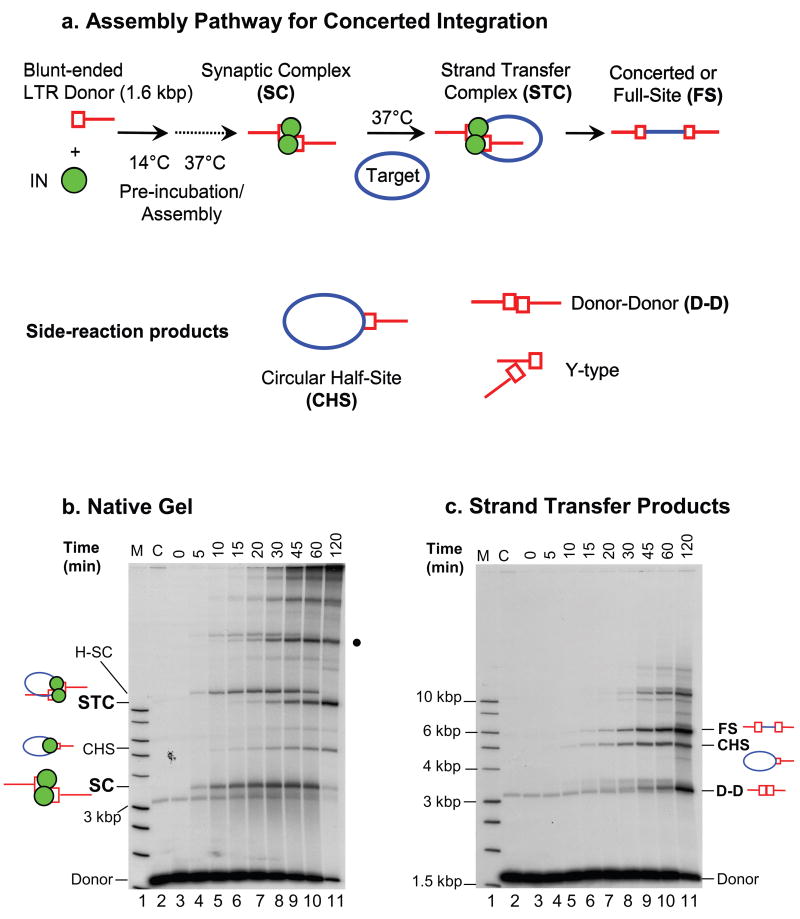Fig. 1.
Concerted retroviral DNA integration. (a) Schematic for HIV-1 SC and STC assembly, which results in concerted or full-site (FS) integration product formation. The reaction, depicted with a 1.6 kb blunt-ended HIV-1 U5-containing substrate, is applicable to a variety of linear viral DNA substrates (see Fig. 2 for additional HIV-1 examples). Side-reaction products (CHS, D-D, and Y-type) are also formed in the reaction mixture. (b) A typical time course experiment revealing the differential kinetics of SC and STC formation. IN (20 nM) was assembled with the 1.6 kb U5 blunt-ended donor DNA substrate (0.5 nM) at 14°C, and further incubated with supercoiled target DNA at 37°C for various times. The transient SC, which is identified here on a 0.7% native agarose gel, appears at ~5 min (lane 4), reaches near maximum between 30 min (lane 8) and 45 min (lane 9), and nearly disappears by 120 min (lane 11). The H-SC, presumably formed by SC multimers, follows similar kinetics. Upon binding target DNA, the SC is converted to the STC, with maximum quantities of STC detectable at ~120 min. The various IN-DNA complexes are marked on the left. Lane 1 contains a 32P-labeled 1 kb ladder (marked M) and lane 2 is without IN (marked C). (c) Strand transfer products obtained after deproteinization of the same samples shown in panel b. The quantities of FS product parallel the quantities of STC. Other labeling is the same as in panel b.

